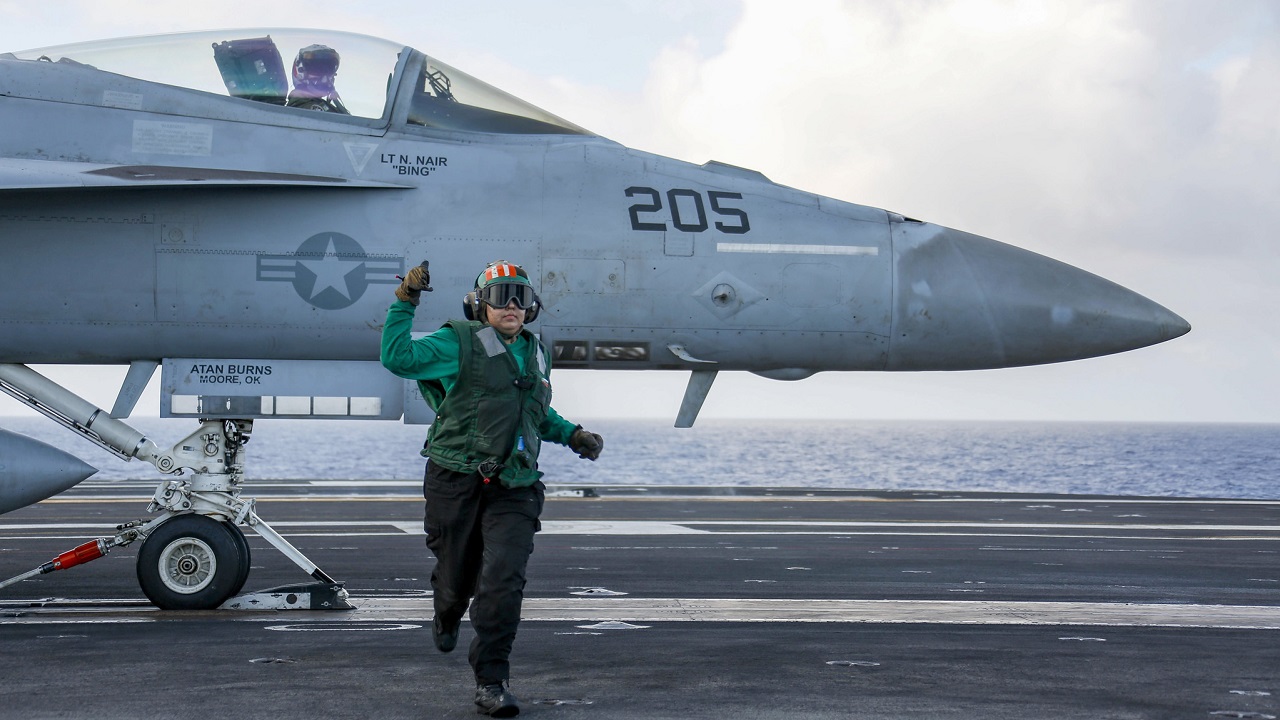Recent developments in anti-ship missile technological capabilities, especially their usage to deadly effect by Ukraine against the Russian invaders’ naval forces, have many American defense pundits concerned about the viability and survivability of surface warships. Concerns are especially sharp over aircraft carriers.
While it can be argued that carriers are becoming obsolescent, they’re far from becoming truly obsolete. They’re not going out of the U.S. Navy arsenal anytime soon. Not in the general sense, at least. However, those of us who still believe in the vitality of aircraft carriers as global power projection tools are quite concerned about the recent announcement that the U.S. Navy is getting ready to decommission not just one, but two of these mighty warships.
The Basics
This latest news comes to us from Lauren Wurth, writing for the Past Chronicles:
“The USS Nimitz leaves active duty in 2026 due to the Navy’s proposal for an additional five and a half months of maintenance availability. Before the carrier’s anticipated retirement, this maintenance phase will ensure it is in top shape and is ready to perform its tasks efficiently. Afterward, the USS Dwight D. Eisenhower will retire the following year. This action is a component of a larger, strategic plan to update the 297-ship fleet now in service.”
Brief History and Specifications of the Two “Retiring” Warships
The Nimitz (CVN-68) and the Eisenhower (CVN-69) are both members of the Nimitz class. The former, the lead ship of the class, was laid down on June 22, 1968, launched on May 13, 1972, and commissioned on May 3, 1975. The latter was laid down on Aug. 15, 1970, launched on Oct. 11, 1975, and commissioned on Oct. 18, 1977.
Being sister ships, these two vessels have essentially the same specifications: a hull length of 1,092 feet, a beam width of 252 feet, and a fully laden displacement of 100,020 tons. In spite of that heavy mass, the ships boast an impressive top speed over 30 knots. They have an impressive carrying capacity of up to 90 fixed-wing aircraft and helicopters with a crew of around 6,000 commissioned officers and enlisted seamen. Armament-wise, the Nimitz ships bristle with Sea Sparrow and RIM-116 Rolling Airframe Missiles (RAMs), as well as .50-caliber machine guns.
These ships and their crews have repeatedly proven their mettle in battle. The Nimitz launched combat sorties in support of Operation Iraqi Freedom (OIF) and Operation Inherent Resolve (OIR) in Iraq, and Operation Enduring Freedom (OEF) in Afghanistan, as well as shooting down two Libyan MiG-23 Floggers in August 1981. Meanwhile, Eisenhower’s aircraft dropped ordnance in anger for the first time in February 2000 while enforcing Operation Southern Watch’s No-Fly Zone over Iraq, and then went on to participate in OEF, OIR, and OIF.
Where to From Here?
To make matters worse, Wurth’s article also points out “plans to sell off two Independence-class Littoral Combat Ships [LCS] to foreign military.” She doesn’t specify which foreign military entities are the prospective customers, so we can only hope that they’ll turn out to be one of America’s allies in the Indo-Pacific, whether they be India, Australia, Japan, South Korea, or Taiwan. The specific LCS vessels in question are the USS Jackson (LCS-6) and USS Montgomery (LCS-8), commissioned in 2015 and 2016 respectively.
Meanwhile, what about the Ford-class ships, which are supposed to be The Next Big Thing in American supercarrier technology and capabilities? Thus far, only the USS Gerald R. Ford (CVN-78) is in active service, while the USS John F. Kennedy (CVN-79) is still undergoing her fitting out. The next two ships of the line, the USS Enterprise (CVN-80) and USS Doris Miller (CVN-81), aren’t scheduled to be commissioned until 2028 and 2032 respectively, which equates to a foreboding two-to-five-year gap after the loss of the Nimitz and “Ike.”
Yikes.
Christian D. Orr is a former Air Force Security Forces officer, Federal law enforcement officer, and private military contractor (with assignments worked in Iraq, the United Arab Emirates, Kosovo, Japan, Germany, and the Pentagon). Chris holds a B.A. in International Relations from the University of Southern California (USC) and an M.A. in Intelligence Studies (concentration in Terrorism Studies) from American Military University (AMU). He has also been published in The Daily Torch and The Journal of Intelligence and Cyber Security. Last but not least, he is a Companion of the Order of the Naval Order of the United States (NOUS).

